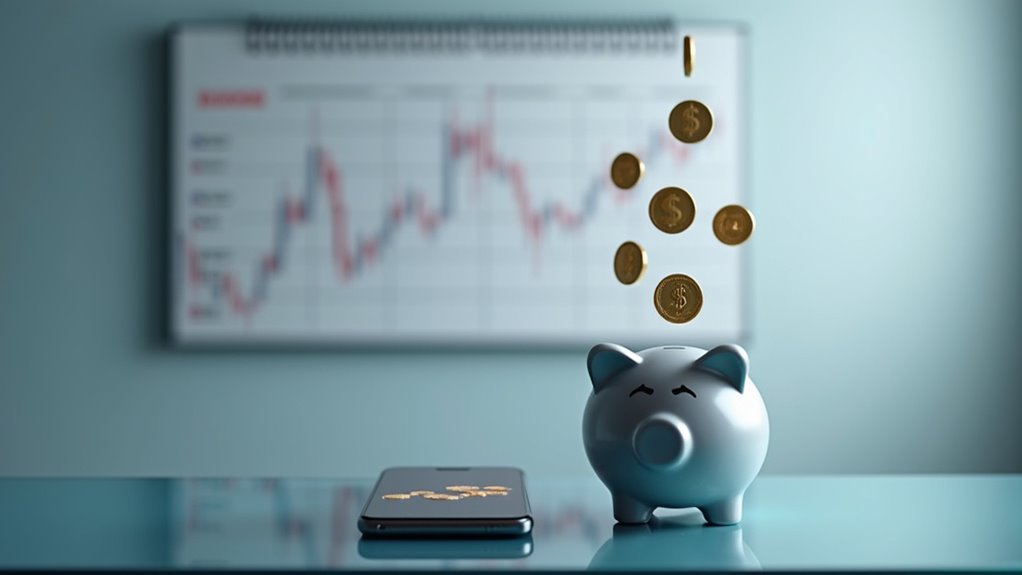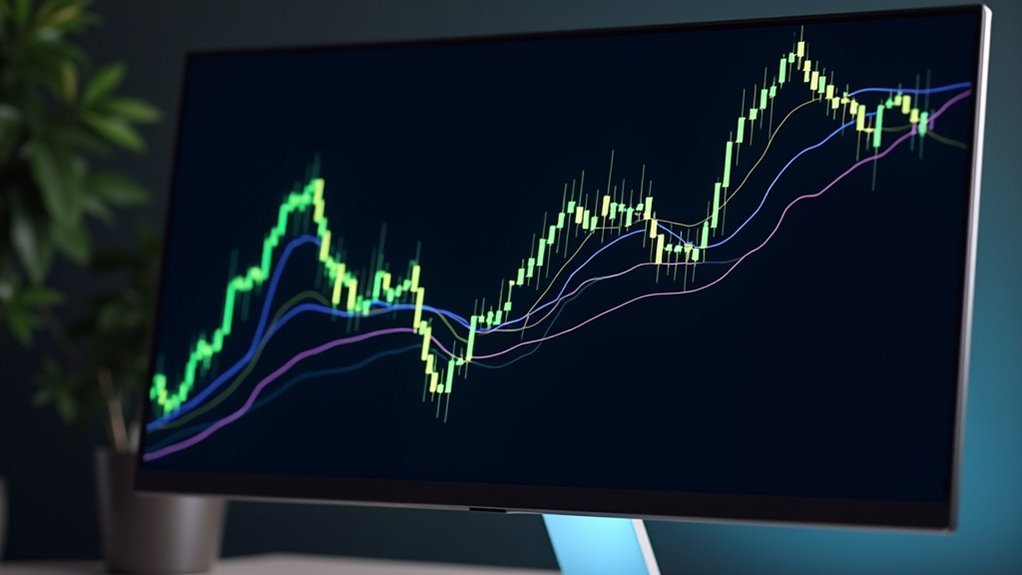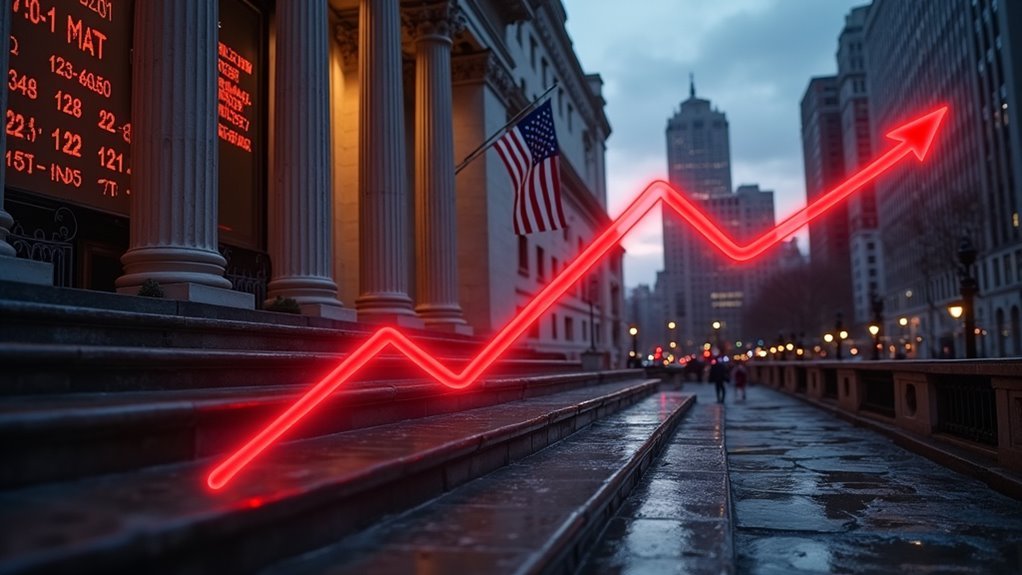Stock valuation boils down to key financial metrics that reveal a company’s true worth. Price-to-Earnings (P/E) ratio shows if shares are expensive relative to profits, while Price-to-Book (P/B) highlights asset value. Dividend yields matter for income seekers, but watch out – high yields can be red flags. Debt levels need scrutiny too. Smart investors check multiple indicators, because no single number tells the whole story. The deeper you go, the clearer the picture becomes.

How can investors separate worthwhile stocks from pure market hype? The answer lies in understanding key financial metrics that reveal a company’s true value.
Let’s face it – flashy headlines and social media buzz don’t pay dividends.
The Price-to-Earnings ratio tells a significant story. It’s simple math: stock price divided by earnings per share. A lower P/E might mean a bargain, but context matters. Different industries have different standards. What’s cheap for a tech company might be expensive for a utility. Intrinsic value calculations help determine if the current P/E represents a fair price. Historical averages provide essential benchmarks for determining if current P/E ratios are reasonable.
And here’s the kicker – you can look backward using trailing P/E or forward using projected earnings. Choose wisely.
For companies loaded with physical assets, Price-to-Book ratio becomes the star of the show. When P/B dips below 1, value investors start salivating.
But don’t get too excited about P/B when evaluating software companies – their real value isn’t sitting in warehouses or factories.
Follow the money. Dividend yield catches many investors’ eyes, especially those seeking steady income. Profitability ratios provide crucial insights into a company’s ability to maintain and grow dividends over time.
But beware the siren song of ultra-high yields. Anything above 4% deserves serious scrutiny. Sometimes a high yield is just a dividend cut waiting to happen.
Want to know if a company’s drowning in debt? Check the Debt-to-Equity ratio. Lower numbers generally mean better financial health, but industry standards vary wildly. A utility company can handle more debt than a retailer. That’s just how it works.
For those growth companies burning cash while chasing market share, Price-to-Sales ratio becomes the go-to metric. It’s particularly useful when profits are still a future dream.
And don’t forget Free Cash Flow Yield – it shows how much cash a company actually generates relative to its price tag.
Technical traders swear by the Relative Strength Index for timing. Above 70? Probably too hot. Below 30? Maybe too cold.
But remember – these numbers aren’t crystal balls. They’re tools, not guarantees.
Frequently Asked Questions
How Often Should I Check and Re-Evaluate My Stock Positions?
Most investors check quarterly – it’s the sweet spot.
Monthly works for active traders who live and breathe the market.
Long-term investors? Annual reviews are fine.
Market chaos might require more frequent peeks.
But obsessively checking stocks every hour? That’s just asking for stress-induced panic selling.
Life changes, market shifts, and portfolio complexity ultimately determine the right rhythm for each investor.
What Role Do Company Executives’ Trading Activities Play in Stock Evaluation?
Executive trading patterns can be revealing market signals. When multiple insiders buy shares, it’s often bullish – they clearly know something good.
Selling? Not always bad news. Could just be paying for a divorce or new yacht. But timing matters. Pre-earnings purchases usually mean confidence, while panic selling before bad news is pretty obvious.
The SEC tracks it all, making trades public within 48 hours.
Should I Consider the Company’s Environmental and Social Impact Policies?
Environmental and social policies matter more than ever.
Companies with strong ESG practices often show better risk management and long-term stability.
Reality check: ESG factors influence stock prices alongside traditional metrics.
It’s not just feel-good fluff anymore – major investors track sustainability scores.
Poor environmental records can tank stock values overnight.
Social controversies? Same deal.
Big institutional money increasingly demands corporate responsibility.
How Do Stock Splits Affect the Evaluation Process?
Stock splits don’t fundamentally change a company’s value – period. It’s like breaking a dollar into four quarters. Same worth, different pieces.
The evaluation process stays mostly unchanged, but analysts need to adjust their metrics. EPS drops proportionally, P/E ratio stays steady, and historical charts get recalculated.
Sure, splits might attract more retail investors with lower share prices, but the core analysis shouldn’t shift.
What Impact Do Global Political Events Have on Stock Valuations?
Global political events hit stock valuations like a hammer.
Wars, elections, and trade disputes create instant market reactions – sometimes brutal ones. Sanctions crush affected companies overnight. Defense stocks soar during conflicts. Oil prices spike during Middle East tensions. Even tweets from world leaders can send stocks tumbling.
Smart money watches political calendars closely. Markets hate uncertainty, and politics delivers plenty of it.








